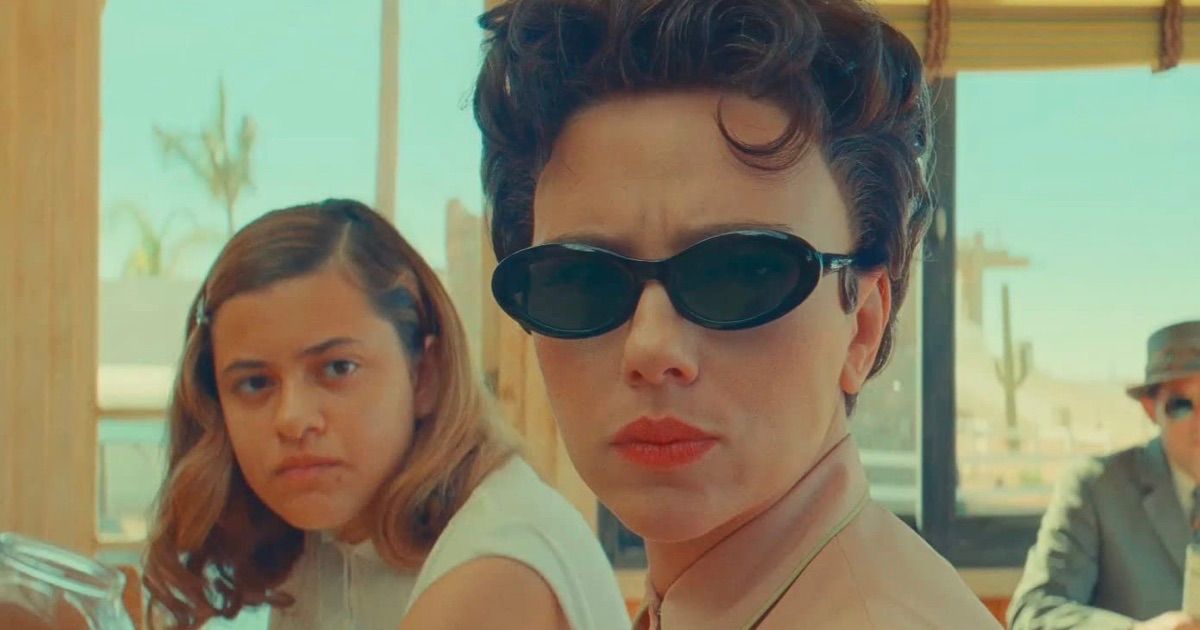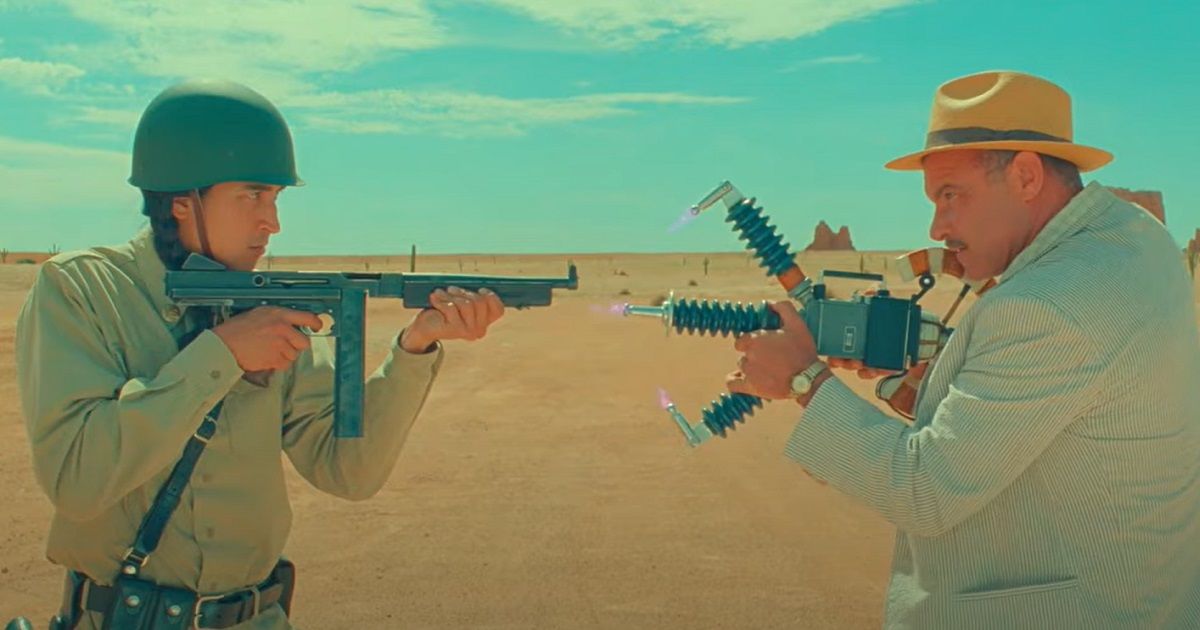Junior stargazers, their parents, and the military descend on a small desert town for a science competition. What they encounter will change their lives forever. At least that's what the playwright thinks should be the plot of his untitled play, according to the TV narrator telling the audience at home about the playwright, actors, director, and issues behind the scenes staging the play. Asteroid City depicts three different narratives at once. Drum roll please, it is a film...within a film...within a film. Auteur Wes Anderson delivers his most abstract cinematic endeavor yet. It's a lot to digest and puzzling at times, but boldly creative and loaded with good humor.
In black and white, the Narrator (Bryan Cranston) addresses the camera directly. A set behind him illuminates the remote cabin of famed playwright Conrad Earp (Edward Norton). He's hard at work fleshing out his new play but has a few stumbling blocks. Earp isn't quite sure where his story will go but has a general idea about the characters and themes. He also contemplates the cast and director. Those details will come to him later. He starts typing in earnest.
In vibrant color, Augie Steenbeck (Jason Schwartzman), a war photographer, drives to an auto shop in the desolate desert. The year is 1955. Augie's accompanied by his teenage son Woodrow (Jake Ryan), nicknamed "Braniac" for his genius intelligence, and three young daughters. They're in the middle of nowhere for the Junior Stargazers competition. Asteroid City, known for its meteor crater, was chosen to host the event. Hank (Matt Dillon), the mechanic, hilariously tells Augie the car has serious problems and would take a small fortune to fix.
Scarlett Johansson as Midge Campbell
Augie takes his children to the diner for lunch. He calls Stanley Zak (Tom Hanks), his father-in-law, to update him on the situation. He's on his way to pick them up. Augie notices famed movie star Midge Campbell (Scarlett Johansson) at the counter. She's at the competition with her brilliant daughter Dinah (Grace Edwards). Augie fills the children's bellies before telling them bad news. Their beloved mother passed away weeks ago. He just didn't have the heart to tell them.
In black and white, back at the TV studio, the Narrator returns to Earp's cabin. The playwright gets an unexpected visit from a bit actor (Schwartzman) who wants to portray Augie. He's got a different take on the character and how the play should proceed. We then return to the colorful town where all the Junior Stargazers have arrived, along with a religious teacher (Maya Hawke) and her students, a singing cowboy (Rupert Friend), the head scientist (Tilda Swinton), and General Grif Gibson (Jeffrey Wright). The motel manager (Steve Carell) leads everyone to their bungalows. Excitement, or sadness in Woodrow's case, fills the air as the competition begins in earnest. Everyone looks forward to observing a rare celestial event the following night.
Did any of that make sense? Asteroid City's complex narrative doesn't spoonfeed important details. It requires rapt attention to avoid confusion. The narrator doesn't explain anything. He's the observer recounting the story as it happens. Anderson has him hilariously breaking convention and popping up in the town as well. This annoys the actors who are in full character staging the play. There's a surreal nod and wink to the entire process.
A Bonkers Situation
Anderson takes a deeper dive in the second act. We meet Schubert Green (Adrien Brody), the recently separated director who wants a famous actress (Johansson) to star alongside the relatively unknown protagonist. He decides to live backstage at the theater while going through his divorce. This info has nothing to do with the play. Asteroid City gives each member of the ensemble rawhide to chew on. Anderson's meaty approach provides a lot of context but feels like added filler at times. The primary story arc in the desert isn't lacking details. A leaner, more concise edit would sharpen the plot but lessen the quirk factor.
Asteroid City has exceptional cinematography and production design. Anderson accompanies rich character development with corresponding sets and backgrounds. The narrator and Earp, both depicted in black and white, are the nuts and bolts anchors of the film. The action in town has vivid hues representing the crazy developments. The contrast keeps you engaged through head-scratching moments. Anderson's use of props is especially clever with the children's wacky inventions. Jetpacks, ray guns, and even a hot plate become instrumental.
Asteroid City will undoubtedly delight Anderson's fan base. There's a familiar comfort seeing his tried and true veteran ensemble in a bonkers situation. But the film may be too abstract for general audiences. Character overload, in conjunction with the labyrinthine storyline, perplexes as the players leap in and out of the play. Anderson self-deprecatingly acknowledges this when the protagonist admits to not having a clue what's actually going.
Asteroid City is a production of American Empirical Pictures and Indian Paintbrush. It will have a June 16th limited theatrical release in New York and Los Angeles followed by national distribution from Focus Features.


Comments
Post a Comment